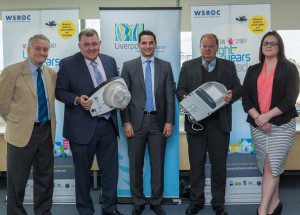
Liverpool City Council will replace old, inefficient street lights in 23 suburbs, as part of WSROC’s Light Years Ahead project.
This will save council more than $5 million over 20 years and 19,640 tonnes of carbon emissions.
Liverpool is one of nine Western Sydney councils which have joined forces to reduce energy costs and consumption by replacing old and inefficient street lights.
Mercury vapour lights will be replaced with energy efficient LED lights, which are cheaper and more sustainable.
“We’ll replace more than 3,700 lights (over 23 per cent of the total lights) in 23 suburbs including Busby, Miller and Liverpool, and estimate we’ll save around $5.8 million in electricity costs and 19,640 tonnes of carbon dioxide emissions,’’ says Mayor Ned Mannoun.
“Public lighting costs millions of dollars each year, with street lighting accounting for more than half of council’s energy costs. These savings will allows us to redirect funds to other vital projects, infrastructure and services.”
The $7.8 million dollar project began in June 2014 and is expected to be completed by May 2016. The project received funding from the Australian Government.
The 23 local suburbs are: Busby, Cartwright, Casula, Cecil Hills, Chipping Norton, Edmondson Park, Green Valley, Hammondville, Heckenberg, Hinchinbrook, Holsworthy, Horningsea Park, Hoxton Park, Liverpool, Lurnea, Miller, Moorebank, Pleasure Point, Prestons, Voyager Point, Warwick Farm, Wattle Grove and West Hoxton.
The Western Sydney Regional Organisation of Councils (WSROC) Light Years Ahead project will replace approximately 13,000 street lights in the nine WSROC Member Councils, including Liverpool.
WSROC President and Liverpool Councillor Tony Hadchiti said the project is the biggest street lighting replacement project NSW has ever seen.
“We have 126,955 street lights in our nine councils,’’ he said.
“This project replaces over 10 per cent of those lights. “We hope this project is the start of future upgrades, so we can continue the great work we’ve started.
[social_quote duplicate=”no” align=”default”]“There are major benefits for this project – not just the cost savings to councils and residents. By reducing our collective energy consumption we are making a major reduction in our carbon footprint.[/social_quote]
“WSROC has shown that it can lead the way in ensuring both financial and environmental sustainability for our councils, especially in relation to the NSW Government’s Fit for the Future program.”
